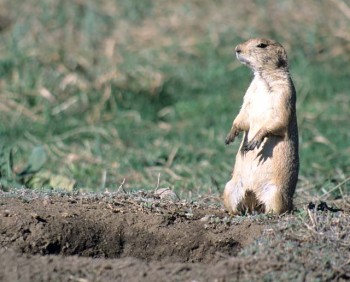
Allow me to fall from grace a bit and tell you about an unusual project from last summer. Until now I’ve kept mum on the subject, as my take on it ranges from awesome to repulsed, and I played an integral part.
It all started last spring, when, while gimping about in the confinement of our home with my newly repaired ACL, I received a call from the UK—an assistant producer, Richard Grisman, then from Fresh One TV, asking about wild food foraging in Colorado. Where could they bring 16 chefs to survive— hunting, fishing, and foraging—in early June? Were there any concerns that would need to be addressed?
There was only to be one episode (Episode 3: Kill It, Cook It, Eat It) in Chef Race: UK vs. US for BBC America—a reality TV show that would pit a team of eight British chefs against eight American chefs in a series of 10 quasi-cooking-related challenges to take place on a road trip across the US from Southern California to New York.
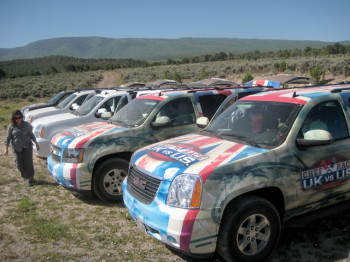
Aside from this recent spell of global warming we’ve been having, foraging in early June is a tough call in the cold, arid lands of Colorado. “Maybe you should do the foraging challenge in California,” I ventured. But it was a no-go.
“Maybe you should do it later in spring?” I tried. Nope—the start date was set; the challenges were set; there was simply the small matter of arranging for everything to work. Time was very much on my side in those days and I was tickled to have someone to talk to so I chatted with Richard at length about regulations and the project’s overall feasibility, though the whole thing seemed rather far-fetched to me. Funny character, that Richard. At one point he opined that avocados were tasteless things that were as odd to eat as wild plants. You don’t say?
Later, I got a call back. The producers wanted to hire me as a “fixer” to set the thing up. For BBC America, no less. Um sure, yeah, I can do that.
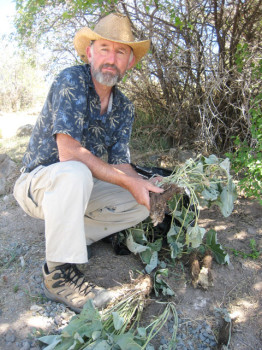
“Maybe you should just fish and not hunt,” I told Richard the next time we spoke, having discovered that turkey season would end a week before their arrival and nothing else was in season after that except for European starlings, sparrows, Eurasian-collared doves, prairie dogs (on private land), Richardson’s ground squirrels—which are pretty close to prairie dogs—and coyotes.
“No they really want there to be hunting,” he said.
Of all the options, eating invasives sounded like a great idea to me, a recent convert thanks to Joe Roman and his Eat the Invaders project, so I phoned the only person I could think of who might have, in fact, already eaten a Eurasian collared dove.
Sure enough, Denver-area forager, road-kill scavenger, and small game hunter Butterpoweredbike had killed and eaten her share (recipe 1, recipe 2). “Each side of the breast is about the size of a chicken ‘tender’—you know, those side bits that they pull off of chicken breasts and sell separately,” she said.
This is not going to feed 16 contestants, I thought.
Next, I emailed a hundred or so members of the Colorado Outfitters Association, explaining the situation—that we required an outfitter to guide a group of inexperienced reality TV stars on a hunt when nothing was in season except the aforementioned animals plus, perhaps, crawdads and crickets—ideally on private land where we could get permission to forage non-threatened plant species for consumption. They must have thought I was crazy. I was.
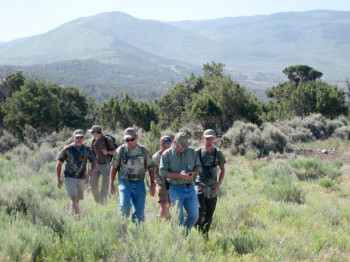
Still, one man heeded the call—the multi-talented Joe Keys, a ski patroller and guide and outfitter from Mesa, Colorado. The tiny town of Mesa, located between Grand Junction and Rifle, sits in the dry desert lowlands but abuts a lush foothills zone by Powderhorn ski area as well as the high-elevation Grand Mesa, known for fishing (and mosquitos). There would be foraging, fishing, and animals to hunt, he promised—including a field of prairie dogs that the landowner would be happy to see controlled.
Prairie dogs are as cute as can be. They live in complex familial structures. To kill and eat them would seem cruel—but that doesn’t keep people from gassing them, especially when the rodents go homesteading on golf course grounds. In farm fields, a horse can break a leg in a prairie dog hole. There are many ways to reduce prairie dog populations, not one of which involves consumption. Some rednecks I know use them for target practice. So by way of justification, I ask this: Would not eating prairie dogs be the more humane solution?
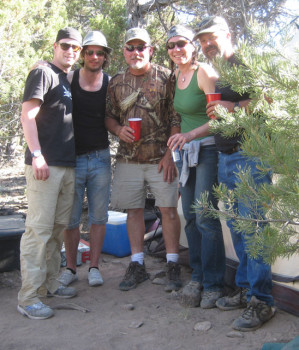
“So—the prairie dogs? Can we really eat them?” I asked Joe.
“Oh yeah, we can eat them,” he said (I paraphrase).
“Have you ever eaten one?”
“No I have not.”
For those reading this post from a practical perspective—Like when the apocalypse hits, can we eat prairie dogs?—keep in mind that prairie dogs are known carriers of Bubonic plague. Not in the dogs themselves, but in the fleas with whom they cohabitate. Thus, would-be eaters should skin and prepare a dog immediately upon extermination, with gloves, and I don’t know—a hazmat suit? This is not my area of expertise. I offer it by way of a disclaimer: Don’t read this and then go kill a prairie dog for dinner and get Bubonic plague is all I’m saying.
If you’re skeezed out now, imagine the contestants—the ones they starved and forced to hike miles in the desert sun so they would be prone to argumentation, making for good TV. A few were pretty disgusted by the scenario—especially after they found out that the locals don’t even eat prairie dog.
In the end, however, the chefs didn’t eat any prairie dog. The locals did. And I did too.
The final challenge of Episode 3 was a cook-off. The teams had an hour to create a buffet meal of their wild-foraged, fished and hunted ingredients (at some point I’ll tell you about the awesome spread of wild dishes that these creative chefs concocted.) For the hunted protein, the American team’s Ronaldo Linares made prairie dog stew, cooked whole in a red sauce, while the Brits came up with what Johnnie Mountain called “Dog n’ Frog,” a play on Surf n’ Turf, featuring small bits of prairie dog and bullfrog meat over a bed of greens.
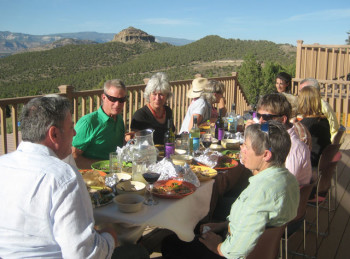
They fed the wild meal to a group of Mesa-area locals, including ski industry folks, old-timers, and other friends of outfitter Joe Keys. After the locals made their plates from the buffet table, I joined the chefs at the window, pressing my face against the glass to watch the final filming as the guests sampled the various plates. But I had ants in my pants at the same time for that abandoned buffet table of wild dishes, so after some silent jumping around and gesturing, the behind-the-scenes crew gave me the go-ahead to start tasting. I was joined soon by the outfitters and other staff on the premises. In fact, everybody but the chefs themselves, pretty much, got to sample the food.
Joe and I sat in the corner of the Hilltop House tasting, and of course we were particularly interested in trading culinary notes on the prairie dog. “Oh this is really good,” Joe said on the white meat from the Brits’ plate—but alas, it was the frog, not the dog. The dog meat was rather dark and oily and I didn’t much care for it, try as I might, despite the palatable presentation in the stew. Nor did Richard Corrigan, the bombastic chef who judged the series.
Some of the locals, though—they thought Corrigan judged the stew too harshly. I even overheard a few singing its praises.
I’m curious what you think. Would you eat prairie dog? Have you eaten prairie dog? If so, please share!
And people of Mesa—consider this an open invitation to share your thoughts on the culinary potential of those pesky but cute colonizers of the prairie that we were forced to eat for reality TV.

This just in, 2 comments on the taste of prairie dog:
“As far as eating prairie dog: They like taste squirrel and would have been better if cooked longer. Would I eat them again? If I was hungry. I wont be trying to fill my freezer with them.” –Joe Keys
“I have eaten prairie dog in NE Arizona….while living on the Navajo Rez. We skewered them with old hangers over the fire. The wind was up, so we ended up going to Grandma’s hogan and put them in an oven to finish. I remember it tasting horrible, but I think they didn’t quite get a fair chance due to the cooking techniques.” –Sunny Savage
You have eaten an animal with a complex language (one that includes specific nouns, verbs and adjectives) and an extensive social structure. You might as well eat your kid brother or the neighbor down the street. You can use the same justifications that you’ve used here. APPALLED.
I’ve had Eastern gray squirrel (LOTS and LOTS of them) and I’ve also eaten groundhog aka “woodchuck”. Squirrel would be difficult to distinguish from chicken if deboned in many recipes, wheras the groundhog is dark meat and a little more oily, although not strong-flavored. I’ve never had prairie dog, but I’d be willing to give it a try.
As for Mario’s comments, he needs to get a life. Prarie Dogs are rodents, plain and simple, not humans. Humans are omnivores and have a long history of eating rodents. Nothing unethical here as long as the animals were dispatched humanely.
I have not tried prairie dog but plan to do so. I’m thinking about a crock pot stew or a slow roast on the grill, like pulled pork. I now live in SD where there are many prairie dogs. I just need to get a better scope for my rifle. I have eaten many squirrel. I am also thinking about trying other problem species such as coyote. I figure, why not use the entire animal. The fur for sale and the meat for food, maybe the bones for arts and crafts.
Me and my friend Putin love to eat prairie dogs. We eat prairie dog cubes in our cereal which is made of prairie dog bones. We even eat the bones. Our digestive systems have adapted for prairie dogs. For lunch, we enjoy prairie dog pizzas because chicken and anchovies is overrated. For dinner, we have the best feast of all. We eat prairie dog kebabs with prairie dog blood as the sauce. We drink prairie dog blood instead of wine. Prairie dog is very chewy, moist and tender if you cook it right. I also like to eat prairie dog stew, but Putin’s favorite dish is prairie dog borscht.
🙂
Hey Mario and PD eater why don’t you continue to wear your shirts pants and shoes made by staving third world inhabitants. That have to cook and eat what is around them. Do you even have a brain either of you? I’m sure complex thought is far from reason with either of you. Let’s bash people that are eating something that is as invasive as “barnacles”. Probably known to you two as “seafood” get a life and preach your save the world and the little creatures speech for maybe the people who sold you the sandwich you ate next to the beach last week. Who kill twice the animals needed to produce the food you ate. Typical.
I don’t know but I kind of think Prairie Dog Eater might have been kidding. I laughed so hard tears are still wet on my face.
I read Prairie Dog Eater’s comment in a crazy hillbilly voice. Then I read NP Eats comment in a yelling condescending voice. Then I read Darlin’s comment in a sweet concerned voice. What a great night!!
Ohh my. What could life have been if I’m not able to read? People, when have we humans evolved as spieces that we have become refined andaccomplised? So repugnant. Get out of the TV. And you Wildfoodgirl, you have to be ashamed of yourself feeling bad about praire dog – get out of this bizness then. We used to go to the grocery store and buy meat with bone in it. No more. These days you wonder if it’s real meat you’re buying. (Some meat cuts feel like they came from extruded machine. I’ll try eating almost any wild animal except skunk and snakes.
I’ve eaten Ginnypig (I admit, I don’t know how to spell “guinnypig”). It tastes like chicken. I’ve eaten what I believe was cat (though I am not certain). It also tasted like chicken. These dishes I experienced during my travels to Peru and Egypt respectively. In these places such dishes are common fare. Our culture determines in large part what we consider palatable. In America we have become accustomed to ingesting a plate full of chemicals that resembles real food.
China has five major culinary regions that has evolved due to what is available ( I.e. Seafood, rice, etc . . . . This is common everywhere on earth. Why turn your nose up on something you never tried? As far as I am concerned PETA should stand for “People Eating Tastey Animals”.
“..aside from this spell of global warming we’ve been having” …lol..good one…made me laugh…ya, it was called “weather” before the Globalist enviro-tax fraud for wealth stripping of the middle class…isn’t the “Greedy Reset” wonderful!